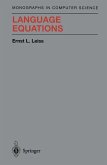Please note that the content of this book primarily consists of articles available from Wikipedia or other free sources online. In theoretical computer science, more precisely in the theory of formal languages, the star height is a measure for the structural complexity of regular expressions: The star height equals the maximum nesting depth of stars appearing in the regular expression. The concept of star height was first defined and studied by Eggan (1963). More formally, the star height of a regular expression E over a finite alphabet A is inductively defined as follows: scriptstyle hleft(emptysetright),=,0, scriptstyle hleft(varepsilonright),=,0, and scriptstyle hleft(aright),=,0 for all alphabet symbols a in A. scriptstyle hleft(E Fright),=, hleft(E, mid, Fright),=,max left(, h(E), h(F),right) scriptstyle hleft(E^ right),=,h(E)+1. Here, scriptstyle emptyset is the special regular expression denoting the empty set and the special one denoting the empty word; E and F are arbitrary regular expressions. The star height h(L) of a regular language L is defined as the minimum star height among all regular expressions representing L.
Bitte wählen Sie Ihr Anliegen aus.
Rechnungen
Retourenschein anfordern
Bestellstatus
Storno








